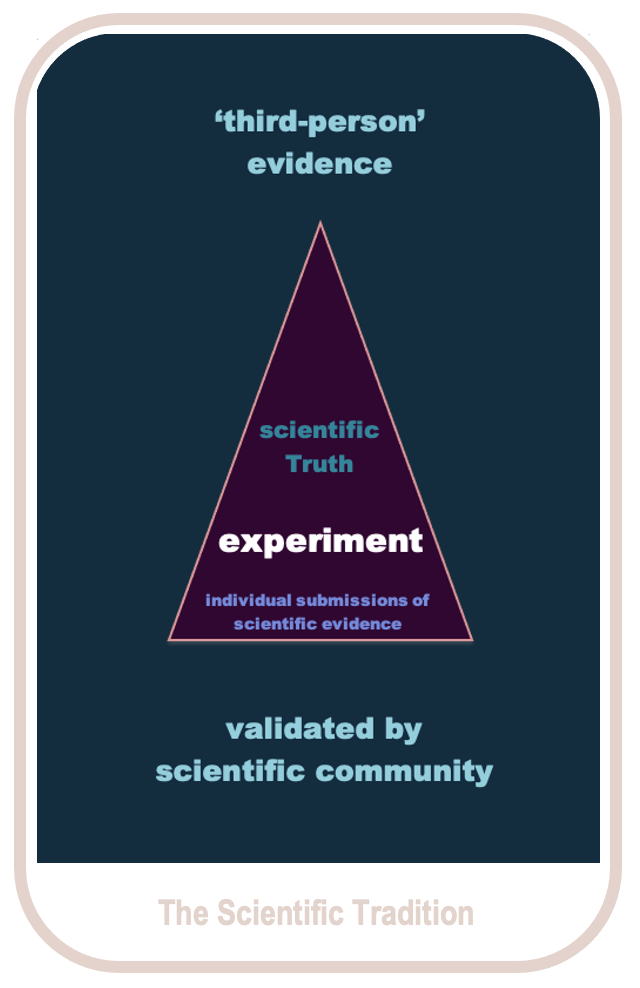Below is an excerpt from my forthcoming book…
© Mahabodhi Burton
1 minute read
This excerpt is from the chapter ‘The Evidence Bases in Religion, Science and Politics,’ in which I explore how the scientific tradition functions. This excerpt follows on from Secular Religion.
The Embodied Mind
Chogyam Trungpa Rinpoche’s establishment of the Naropa Institute and the subsequent collaboration with Francisco Varela in exploring cognitive science–and aided by the Dalai Lama’s long-standing interest in science–led to the publication of the influential book ‘The Embodied Mind.’ This work laid the theoretical foundation for the ongoing dialogue between Buddhism and Science.
The Scientific Tradition Pyramid
Varela, along with Evan Thompson and Eleanor Rosch, posited a central insight regarding the distinct forms of evidence employed by Science and Wisdom traditions. Science relies on ‘third-person evidence’ or objective evidence, progressing through experimentation, validation by the scientific community, and the establishment of scientific truth. The reason why such evidence is termed “third person” is that once an experiment is completed, various third parties—we might call them ‘The They’—need to replicate the experiment and corroborate its results.
By amassing corroborated third-person scientific evidence, endorsed by the scientific community, a definitive scientific veracity is established, graphically represented by the depicted pyramid.
The ascending progression along the pyramid symbolizes the incremental consolidation of scientific truths, indicating a growing and substantiated body of knowledge within the scientific domain.
A hierarchy in Science
However, not all science maintains the same level of objectivity, and a spectrum exists from high-certainty Evidence-based Science to low-certainty Pseudoscience. The evaluative criterion for any scientific discipline lies in its capacity to generate tangible and advantageous outcomes in the world, typically manifested in technological advancements. In contrast, pseudoscience may be aptly characterized as a subjective tradition, although it can sometimes yield benefits that elude precise quantification.










 Users Today : 39
Users Today : 39 Users Yesterday : 23
Users Yesterday : 23 This Month : 497
This Month : 497 Total Users : 13924
Total Users : 13924
